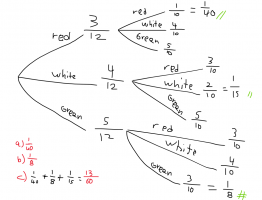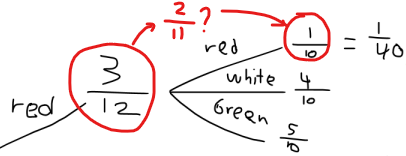Kulla_9289
Junior Member
- Joined
- Apr 18, 2022
- Messages
- 213
A bag contains 3 red, 4 white, 5 green balls. Three balls are selected without replacement. Find the probability that the three balls chosen are:
a) all red
b) all green
c) one of each colour
My answers:
a) 1/40
b) 1/8
c) 13/60
Thanks in advance.
a) all red
b) all green
c) one of each colour
My answers:
a) 1/40
b) 1/8
c) 13/60
Thanks in advance.


